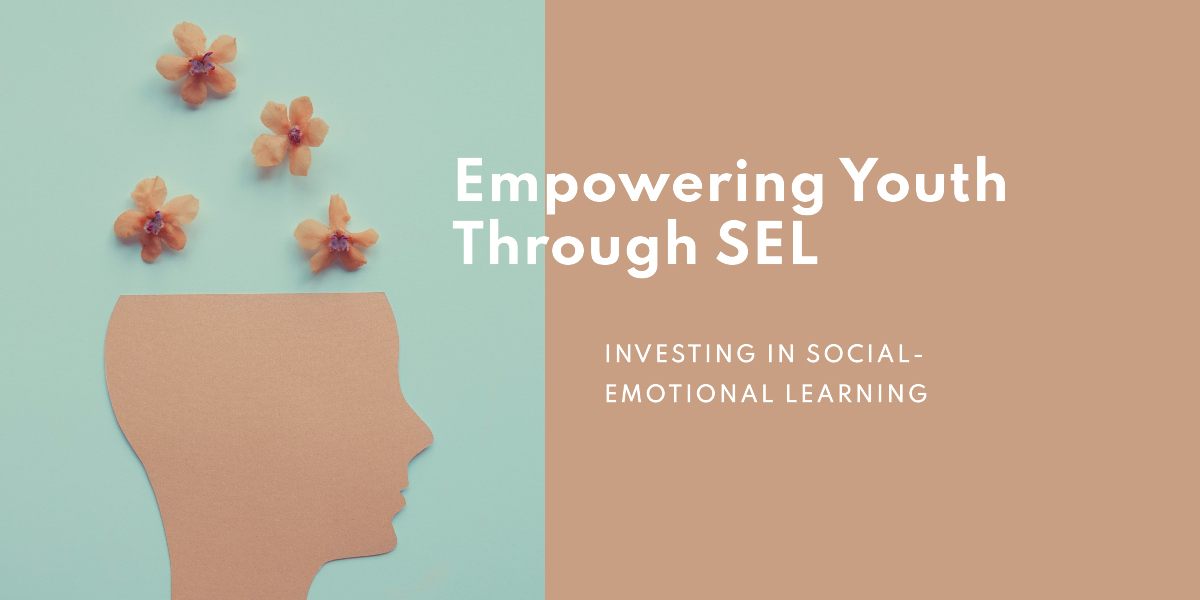The youth mental health crisis is a pressing issue, with nearly one in five young people reporting challenges such as anxiety and depression. This reality can be overwhelming, but it also highlights the urgent need for effective solutions that can help our children thrive.
Educational institutions hold a special ability to influence outcomes positively. One promising approach gaining traction is Social-Emotional Learning (SEL). This method focuses on teaching students essential skills for managing their emotions, building positive relationships, and making thoughtful decisions. Research shows that SEL not only enhances emotional well-being but also improves academic performance and reduces behavioral issues, creating a more supportive learning environment.
In this article, we will explore the critical role of SEL in promoting youth mental health, examine how it is implemented in schools, and discuss why investing in this approach is vital for fostering resilient and healthy future generations.
Together, let’s discover how SEL can transform the lives of our young people and support their journey toward emotional wellness.
Let’s dive in!
Key Takeaways:
- SEL boosts emotional health and academic success
- A whole-school approach supports student well-being
- Investing in SEL tackles the youth mental health crisis and yields lasting benefits
The Urgent Need for Support in Youth Mental Health
Youth mental health crisis is a critical issue today, with alarming statistics highlighting a significant rise in mental health disorders.
According to the Centers for Disease Control and Prevention (CDC), over 37% of high school students report experiencing persistent feelings of sadness or hopelessness.
This crisis has been further intensified by the COVID-19 pandemic, leaving many young people feeling isolated and anxious.
The long-term effects of untreated mental health issues can be profound, affecting academic performance, personal relationships, and overall quality of life. It is essential for schools to play an active role in supporting students as they navigate these challenges.
By recognizing and addressing mental health needs, schools can create a more nurturing environment where young people feel understood and empowered to thrive.
What is Social-Emotional Learning (SEL)?
Social-Emotional Learning (SEL) refers to the process through which children and young people develop crucial life skills. This includes understanding and managing their emotions, building healthy relationships, and making responsible decisions. By fostering these competencies, SEL promotes emotional health and wellness among students.
The core competencies of SEL
Self-Awareness
This involves recognizing one’s emotions and understanding how they influence behavior. Studies have shown that students with high self-awareness are better equipped to handle stress, implement coping strategies, and make informed decisions.
Self-Management
SEL teaches students how to regulate their emotions and manage stress effectively. For example, learning techniques such as deep breathing or mindfulness can help students remain calm during challenging situations.
Social Awareness
Empathy is a critical component of SEL. By fostering social awareness, students learn to understand others' perspectives and emotions, which promotes inclusivity and reduces bullying.
Relationship Skills
SEL equips students with the skills necessary to communicate effectively, resolve conflicts, and maintain healthy relationships. Building solid social connections can offer emotional support, helping to alleviate feelings of loneliness and depression.
Responsible Decision-Making
Students learn to assess their choices and consider the consequences of their actions. This competency is vital in reducing risky behaviors, such as substance abuse, that can negatively affect youth mental health.
The Connection Between SEL and Youth Mental Health
Today’s students face pressures like never before. From intense academic expectations to the constant influence of social media, young people are navigating a landscape filled with stress and uncertainty.
This is where Social-Emotional Learning (SEL) can play a transformative role.
Building Resilience
One of the most valuable outcomes of SEL is the development of resilience. Resilience helps students cope with setbacks and challenges, allowing them to recover and grow.
Research indicates that students involved in SEL programs often report higher levels of emotional resilience. This enables them to face life’s difficulties without becoming overwhelmed by anxiety or depression.
As psychologist Angela Duckworth emphasizes, "Resilience isn’t just about bouncing back—it’s about bouncing forward."
This perspective encourages students to see challenges as opportunities for growth rather than insurmountable obstacles.
Reducing Anxiety and Depression
The positive impact of SEL on mental health is supported by numerous studies. A comprehensive meta-analysis of 213 studies found that schools that implemented SEL programs saw significant reductions in rates of anxiety and depression among students.
In addition to enhancing emotional well-being, these programs also led to an average improvement in academic performance of 11%.
By equipping students with tools to manage their emotions, SEL not only addresses immediate mental health concerns but also fosters a more conducive learning environment.
Fostering a Positive School Climate
When SEL is fully integrated into the school culture, it creates a supportive and nurturing atmosphere. Students report feeling safer, more connected, and valued within their school community.
This sense of belonging is crucial for emotional health, as it helps reduce feelings of isolation. A positive school climate that prioritizes emotional wellness can lead to fewer behavioral issues and improved overall well-being, making schools a more welcoming place for all students.
SEL is not just an educational initiative; it’s a vital component of supporting youth mental health in today’s complex world. By prioritizing emotional learning, we can empower students to thrive both academically and personally.
The Role of Schools in Implementing SEL
To effectively support youth mental health, schools must take a proactive approach to implementing SEL. Here are several strategies to consider:
Importance of a Whole-School Approach
SEL is most successful when adopted as a school-wide initiative. This means involving administrators, teachers, students, and parents in creating a positive culture where emotional health matters.
By embedding SEL in the school’s ethos, it becomes a part of everyday life, rather than an isolated lesson.
Integrating SEL into the Curriculum
SEL should not be treated as a separate subject; instead, it can be woven into existing curriculam. Literature classes can focus on discussing characters' emotions, while science lessons can explore the effects of stress on the brain.
Schools that adopt this integrated approach see both academic and emotional improvements among students.
Teacher Training and Professional Development
Educators are on the front lines of implementing SEL, and they require adequate training to support student mental health effectively.
Investing in professional development ensures that teachers are equipped with the skills necessary to nurture emotional wellness and model emotional intelligence every day.
While the benefits of Social-Emotional Learning (SEL) are well-documented, schools often face significant challenges when trying to implement these programs effectively.
Understanding these obstacles—and how to overcome them—is crucial for creating an environment that supports both emotional and academic growth.
Challenges and Solutions in SEL Implementation
Identifying Common Obstacles
One major hurdle is the issue of limited funding and resources. Many schools operate on tight budgets, and adding new programs can seem daunting when there are already numerous demands on financial and human resources.
Additionally, some educators and parents may question the value of prioritizing SEL alongside traditional academic instruction. They might worry that focusing on emotional skills could detract from essential subjects like math and science.
Solutions to Overcome Challenges
To address funding issues, schools can explore partnerships with local communities, businesses, and organizations that share a commitment to youth development. Collaborating with these stakeholders can help secure resources and support.
Schools can also apply for grants specifically aimed at enhancing mental health initiatives or educational programs.
Moreover, it's essential to advocate for government support and raise awareness about the importance of SEL. By communicating the message that emotionally healthy students tend to perform better academically, schools can illustrate the interconnectedness of SEL and academic success.
Professional development for educators is vital. Providing training and resources can help teachers feel more confident in integrating SEL into their classrooms. This training should focus on practical strategies that align SEL with academic objectives, making it easier for educators to see how these two areas complement one another.
The Future of SEL and Youth Mental Health
As we look ahead, the importance of SEL in supporting youth mental health cannot be overstated. By prioritizing SEL initiatives, schools can create environments where emotional wellness is a core value.
The potential impact of widespread SEL implementation is profound, paving the way for healthier, more resilient generations.
Conclusion
The message is clear: investing in Social-Emotional Learning (SEL) is not just beneficial; it is essential for early intervention in addressing the youth mental health crisis. By embracing SEL, schools can create supportive environments that foster emotional wellness and empower young people to thrive.
The time for action is now. Schools, educators, and communities must come together to make SEL a core part of every child’s educational experience. By doing so, we can ensure that students not only survive but thrive in the face of life’s challenges.









